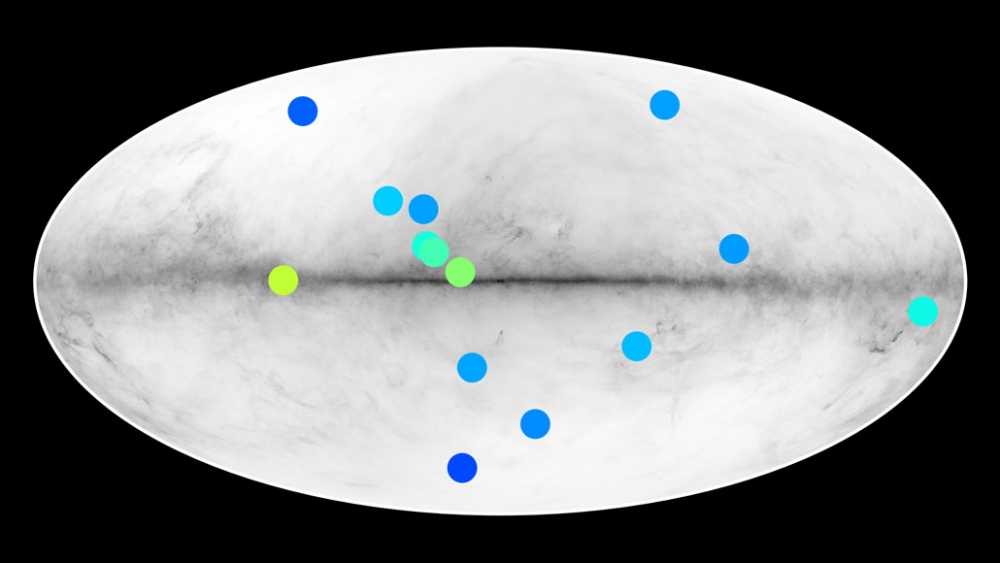Stars made of antimatter could lurk in the Milky Way

Fourteen celestial sources of gamma rays (colored dots in this all-sky map of the Milky Way; yellow indicates bright sources and blue shows dim sources) may come from stars made of antimatter. SIMON DUPOURQUÉ/IRAP
If true, the preliminary find might mean some antimatter survived to the present day
By Maria Temming
APRIL 26, 2021
Fourteen pinpricks of light on a gamma-ray map of the sky could fit the bill for antistars, stars made of antimatter, a new study suggests.
These antistar candidates seem to give off the kind of gamma rays that are produced when antimatter — matter’s oppositely charged counterpart — meets normal matter and annihilates. This could happen on the surfaces of antistars as their gravity draws in normal matter from interstellar space, researchers report online April 20 in Physical Review D.
“If, by any chance, one can prove the existence of the antistars … that would be a major blow for the standard cosmological model,” says Pierre Salati, a theoretical astrophysicist at the Annecy-le-Vieux Laboratory of Theoretical Physics in France not involved in the work. It “would really imply a significant change in our understanding of what happened in the early universe.”
See full text